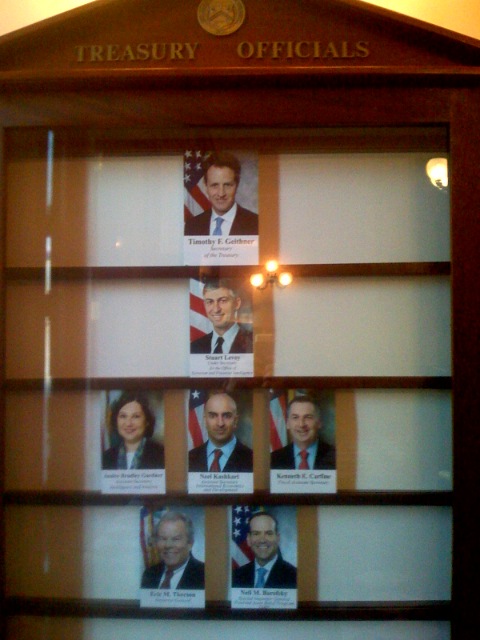On Monday, after Treasury Secretary Timothy Geithner finished briefing reporters on the administration’s new toxic assets plan, journalists filed out of the Treasury building–which conveniently and symbolically sits next to the White House on Pennsylvania Avenue–and spotted something interesting in the lobby: a case that holds the photographs of the Treasury Department’s top officials. And the case looked rather empty.

Under Geithner is Stuart Levey, the under-secretary for terrorism and financial intelligence. He’s a holdover from the Bush administration. Below him are Neel Kashkari, an interim assistant secretary in charge of the Office of Financial Stability, which has been overseeing various bailouts. He’s another Bush holdover. Next to him are Kennther Carfine and Janice Bradley Gardner, two other assistant secretaries appointed during the Bush years. Below them are Eric Thorson, the department’s inspector general. He, too, was named by President George W. Bush. And next to him is Neil Barofsky. He was tapped by Bush last November to be a special inspector general overseeing Treasury’s Wall Street bailout.
So it’s Geithner and a handful of Bush appointees. Sure, there are aides whom Geithner has brought into the department. He has a chief of staff who once was a lobbyist for Goldman Sachs. Gene Sperling, a top Clinton administration economic policy adviser (and well-known workaholic), is a counselor to Geithner. But a glance at the case does leave the unnerving impression that the guy who is supposed to save the economy is home alone.
















